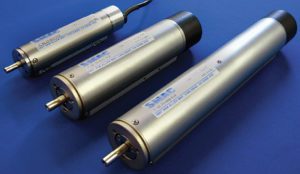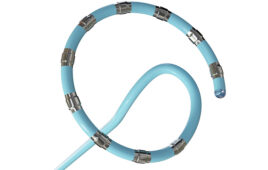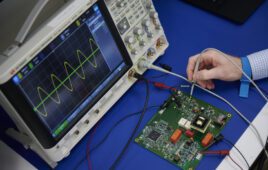 Almost any single device with an electrical and mechanical component can be referred to as electromechanical (EM). You might even call an electric motor an electromechanical device, because it turns electricity into rotary (mechanical) motion.
Almost any single device with an electrical and mechanical component can be referred to as electromechanical (EM). You might even call an electric motor an electromechanical device, because it turns electricity into rotary (mechanical) motion.
For this discussion, let’s focus on a few examples of simple designs most often used externally for manufacturing medical devices. Also, a controller somewhere in the design governs the functions of the EM device. (A brief Controller section accompanies this discussion.) Presently, few EM devices, other than mechanical hearts or cardiac assist devices, are implantable, but that will change.
A trend in the design of a few EM devices is toward miniaturization, to make them as unobtrusive as possible, either for healthcare setting or as wearable units. Exploring a few examples of EM devices can sketch the landscape of the variations available.
Consider a particular AC-powered electric actuator that operates from 100 to 240 Vac. It comes with positioning electronics (to define the limits of the motion) that are UL Listed, which means that device meets UL safety standards. The actuators combine a brushless servomotor with either rotary or linear (output) actuation and digital position control.
Electromechanical cylinders (although they are not cylindrical) give users control over positioning accuracy, axial thrust, torque, and speed, providing more flexibility to applications that traditionally use hydraulic or pneumatic cylinders. The devices use a precision-rolled, ball-screw actuator that ensures high positioning accuracy and repeatability, and eliminates the stick-slip effect.
To give an idea of what is available from such cylinders, the units from one manufacturer come in six sizes with stroke lengths to 2,000mm and speeds to 1.6 m/s. Each unit is rated to an IP65 level of protection.
As you can imagine, the quality of EM devices spans a range. Those with a rating of IP65 (International Protection) are protected against solids, objects, and water. The 6 indicates protection against dust, while the 5 indicates protection against liquids and low-pressure jets of water from all directions.
A second example of an EM device is a linear-actuator line that includes explosion-proof devices. The linear actuator meets ATEX (EU directives for explosion-proof equipment) requirements for use in potentially explosive atmospheres, such as high-oxygen areas. This type of linear actuator includes a roller screw with a servomotor in a self-contained package, intended for reliable and precise operation over thousands of hours, handling heavy loads – even under arduous conditions. These servo-electromechanical systems are said to offer a clean, fast, simple, and cost-effective alternative to hydraulics and longer life compared to pneumatics.
For a third example, consider the gripper, a device often used with pick-and-place robotic systems. Fingered tooling, or jaws, attach to the grippers to hold an object. They come in a variety of styles and powered designs. Three common types are parallel (two-fingered), three-fingered, and angled designs. The most common are parallel designs, with two fingers that close on a workpiece to grip it, or open out to create contact friction on an inside surface. Three-finger designs hold the workpiece in the center.




